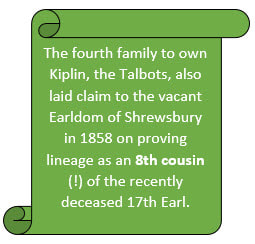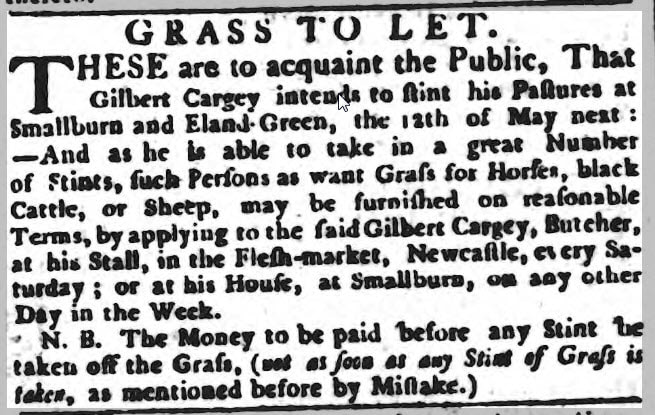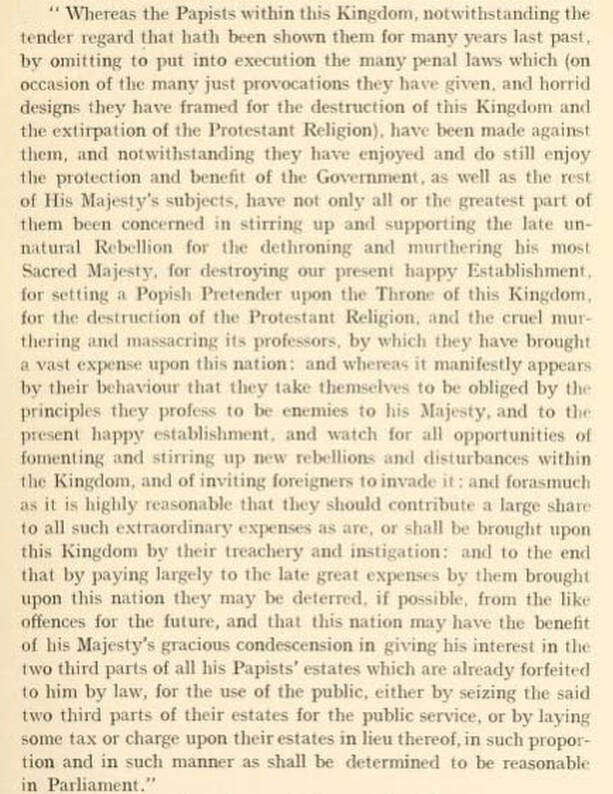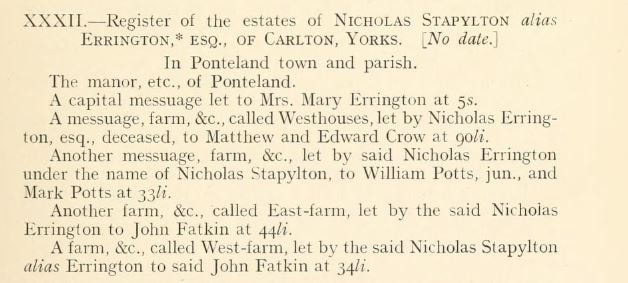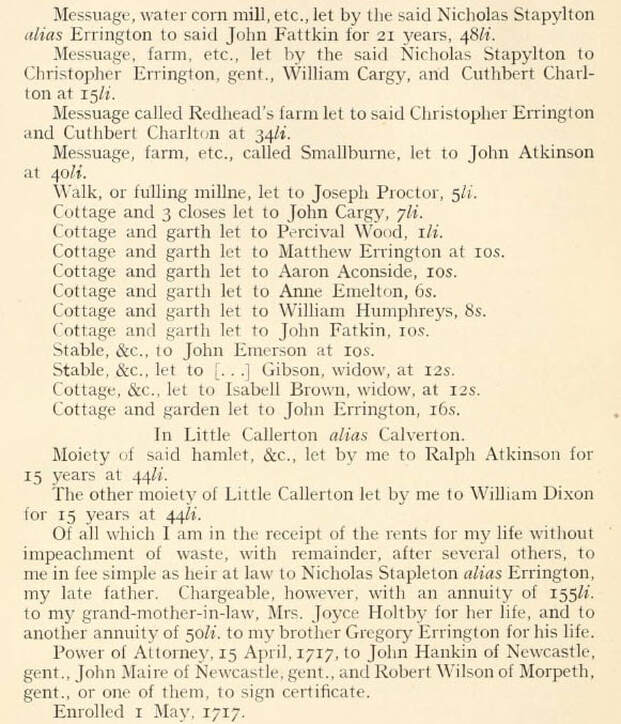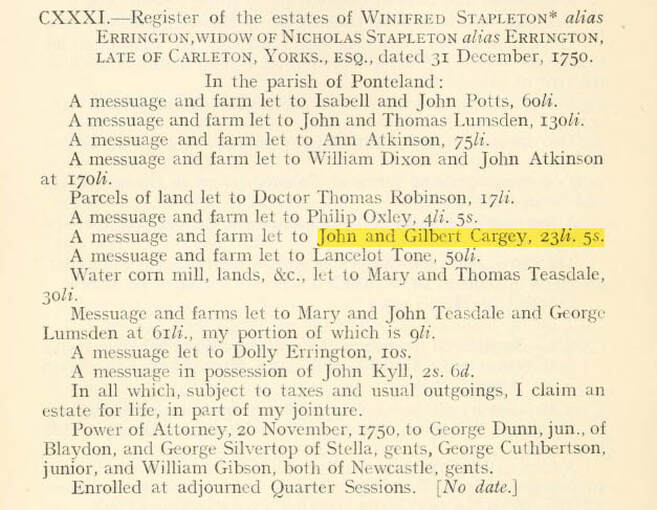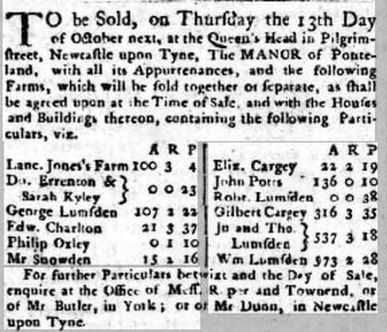How land and associated property tax records can aid family & local history research. 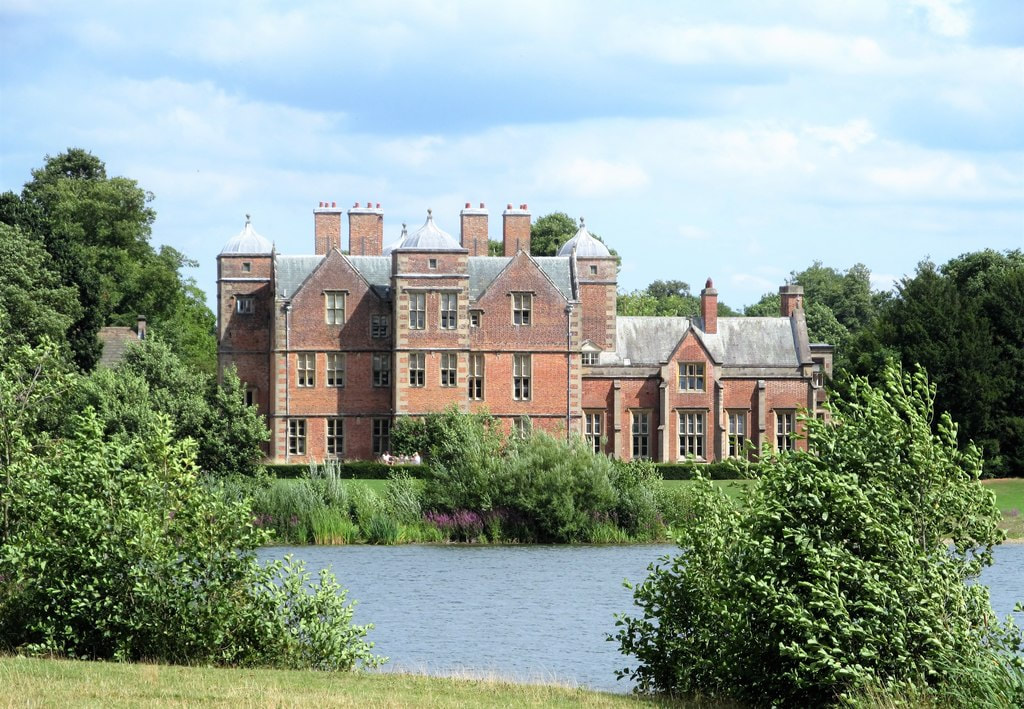 Kiplin Hall west front seen across a corner of the lake, the west front of the hall shows the original, almost square building of circa 1625 with a tower at the mid point of each façade. To the right is the extension of the 1820's which was added by Lord Tyrconnel to make the building into more of a comfortable country house. Kiplin Hall west front Kiplin Hall, Scorton, North Yorkshire cc-by-sa/2.0 - © Gordon Hatton - geograph.org.uk/p/5867091 In seeking inspiration for this month’s blog I was thumbing through some old pedigrees and came across an extensive tree for a Hedley family with familial connections to both Turner and Turnbull families. Whilst I know how the family links to my own through the Trotters of Sprouston and beyond, I am totally ignorant of its wider connections. Being far too extensive to get to grips with in the short time I have had to prepare for this month’s instalment, plus the fact it raises issues over what is possibly the most inaccurately represented pedigree in online trees I have EVER seen, it went back into the heap. Instead I picked up the Cargey pedigree, about whom although I know precious little more, contact between the families was still alive and well in my younger years. I remember being told of the high excitement enjoyed by Cargey descendants who travelled by ‘horse and cart’ from Edinburgh to visit their Smith second cousins at Longhoughton. Indeed during the early part of the 20th century the Cargey’s lived in the same roads of Harewood Grove and Stanhope Road in Darlington as their Aynsley-Smith cousins. In my experience it is often the families that are known to us that get overlooked during the research process in favour of dim and distant cousins. Anyway, I set off to see what else I could ‘dig up’. Cargey Connections with Kiplin Hall Estate A quick Google for the name Gilbert Cargey, (as it is prevalent in every generation of the Cargey family), brought up a reference to a dish ‘a duo of local cheeses, onion marmalade, fruit, white baguette slices and oatcakes’ served in the tea room at Kiplin Hall near Scorton, North Yorkshire. It transpires that Gilbert Cargey b. 1810 - d.1882 had been Land Steward on the Kiplin estate for 21 years to the 4th Earl and Lady Tyrconnell (Sarah Crowe). The Friends of Kiplin Hall have done a fantastic job of piecing together the pedigrees of the four interconnected families that owned Kiplin throughout its 400 year history. [1] The Crowe family (the third owners) are described as ‘minor Northumbrian gentry and venturers until Christopher made his fortune in Italy and married a King’s granddaughter (albeit from the wrong side of the blanket)’ and their family tree contains many familiar Northumbrian names such as Burrell, Reveley, Delaval, Grey and Collingwood. Other than one or two interesting snippets, very little information is available online that can shed much light into the Kiplin Estate during Gilbert’s time of office or, the issues he dealt with in his roll as land agent there. However, the estate archives containing documents relating to the families’ various interests are held by North Yorkshire County Record Office in collection ZBL. Matters pertaining to the Estate and its management are held in ZBL IV and its sub folders which contain Correspondence, Leases and Agreements, Accounts, Rentals, Surveys and Valuations, Agents’ Notes and Papers as well as information relating to land holdings further afield in Surrey, Sussex, Buckinghamshire, Worcestershire and London. For anyone with ancestors who were tenants or worked on the estate these records may hold a wealth of information! Reaching further back in time the archives also contain the Manorial Records for:
A brief overview of Manorial RecordsManorial records, can be rich pickings for those with the patience to scour their contents. As well as details of its land holdings, which in turn would have been held from a feudal ‘superior’, the Manor performed important administrative functions through its own courts – The Court Baron and the Court Leet. The Court Baron dealt primarily with landholdings and the surrender, succession and inheritance of tenancies. Manorial tenants could be classified as ‘free’ or ‘unfree’. In very simple terms free tenants paid a monetary rent for their farms and enjoyed a large degree of independence but were still expected to attend the Manorial courts as jurors. ‘Unfree’ or customary tenants as they became known held land from the Manor according to its customs and by ‘copyhold’ which was a copy of the terms and conditions of their lease as entered in the Court Roll. However, as the two basic types of tenure were held either by inheritance or for life or a specified number of lives, the court rolls for customary or copyhold tenants are often rich sources of genealogical information through the procedure of identifying rightful heirs. The Court Leet heard petty offences such as affray, nuisance, debt and failure to observe the customs of the manor. Its primary function was keeping the ‘King’s Peace’ and as such it appointed officers to do so. This court became obsolete with the introduction of more centralised administration systems and the establishment of parish and town officials and justices of the peace. However, the records may still hold some juicy tales of misdemeanours perpetrated by our ancestors that would otherwise be missed!  Extract from the Tweedmouth Court Leet in 1658. Image courtesy of Berwick Record Office. The Text Reads 'They p[re]sent Hector Howitson for a Blood & Affray Made by him upon Margery the wife of William Allom, for w[hi]ch he the said Hector is fined five shillings & the same to be Leveyed on his Goods & Chattell[es] for the Use of the Lord[es] of this Manor' Following the death of Lady Tyrconnell in 1868 Gilbert Cargey branched out on his own as a Land Agent and Valuer based in Darlington. Clearly he is still remembered at Kiplin, hence the eponymous title of this post, but for good or ill I do not know! The Cargey Family of PontelandAlthough the Cargeys were living in Edinburgh at the time of their visit long ago, their pedigree as sketched out by GAS in the 1930s stretches back in time to a burial at Ponteland in 1678. This area seems to have been ‘their stomping ground’ for a least a century or so before various descendants spread their wings and dispersed to other areas. Their ancestral line isn’t all that challenging to trace – Cargey is an unusual name, it is helped by the fact that the Ponteland registers have survived from 1602 and by a detailed memorial inscription on a family headstone in Ponteland churchyard. ![Picture Photograph of Cargey Memorial Stone in Ponteland Churchyard. It reads: In Memory of Gilbert Cargey Senior late of Ponteland who died Sept. 21st 1763, Aged 53 Years. Elizabeth his Widow died November 12th 1786, Aged 90 Years. Catherine Wife of Gilbert Cargey Junior late Farmer at Stickley died December 17th 1766 Aged 24 Years. Margaret his Daughter died Oct 29th 1772 Aged 4 Years. Catherine his Second Wife died, March 6th 1777 Aged 38 years. Elizabeth his Daughter died June 23rd 1801 Aged 35 Years. The above Gilbert Cargey, January 5th 1823 [sic] Aged 81 Years. Photograph courtesy of 'Find A Grave' UNCEM_2430157_336ac765-3e7e-423c-ae84-2d3b5b842207](/uploads/1/7/2/3/17231010/find-a-grave-uncem-2430157-336ac765-3e7e-423c-ae84-2d3b5b842207_orig.jpeg) In Memory of Gilbert Cargey Senior late of Ponteland who died Sept. 21st 1763, Aged 53 Years. Elizabeth his Widow died November 12th 1786, Aged 90 Years. Catherine Wife of Gilbert Cargey Junior late Farmer at Stickley died December 17th 1766 Aged 24 Years. Margaret his Daughter died Oct 29th 1772 Aged 4 Years. Catherine his Second Wife died, March 6th 1777 Aged 38 years. Elizabeth his Daughter died June 23rd 1801 Aged 35 Years. The above Gilbert Cargey, January 5th 1823 [sic] Aged 81 Years. Photograph courtesy of 'Find A Grave' UNCEM_2430157_336ac765-3e7e-423c-ae84-2d3b5b842207 As it transpires the Gilbert Cargey who died in 1822 was the second of the name and had been married three times, his third wife Sarah Anderson, survived him. Needless to say he had a fairly extensive family comprising 9 known daughters but only one son (from his second marriage to Catherine Sanderson) who lived to adulthood. It would seem from his Will that the outnumbering by female members of his family was keenly felt, as in addition to an annual allowance of £20 and the bed she brought to the marriage, Gilbert recommends that Sarah go to live with one of her daughters! At the time of his death in 1822 Gilbert was farming at Stickley, at Horton near Blyth but was already branching out elsewhere. His surviving son Gilbert 3rd was by then farming his father’s interest at Scremerston Farm near Berwick. The Ponteland Registers suggest that the family had been butchers as well as farmers which was not uncommon. As such more information may be found in the Newcastle upon Tyne Guild Records Ref:GU.BU (part MF), 298. [2] William Cargey great grandfather of the above who died in 1713, was likely of some standing as he was buried within the Church on 12th January 1714, as was his granddaughter Margaret in 1717, and son John in 1760. The early records are trickier to piece together with any degree of absolute certainty beyond this established familial relationship. However, an extremely useful record that has survived which sheds some light on the situation is the registers of the estates of Roman Catholics in Northumberland, taken for the purpose of calculating land tax. Roman Catholic Register & Land TaxLand Tax was first introduced in 1692 levied against real estate and personal property. During the 1690s the rate was established at 4 shillings in the pound and accounted for circa 35% of the national revenue to the Exchequer. From the 1780s to the mid 1830s proof of payment of Land Tax was a qualification requirement in order to vote in elections. As such, many land tax returns for this period can be found within the records of the Quarter Session Court. However, Roman Catholics paid double the rate of tax at 8 shillings in the pound. If landowning ancestors are found paying the higher rate of land tax it is a strong indication that they too were Roman Catholic. One reason for this higher payment rate was their support of the Jacobite cause and the exiled Stuart family. However, it was felt that the law was not being sufficiently adhered to and following the rising in 1715, a new law was passed that introduced a Register of Catholic Landholdings. The register was to include their; names, lands, tenements, the names of the tenants, or those in possession of the said lands, the yearly rents thereof, particulars of leases, fines (admittance fees) paid on renewal of such leases. The certificates were to be brought to the Clerk of the Peace either by the landowner in person, or by others to who he had given Power of Attorney, and enrolled in Court in parchment books to be subscribed by him or them, and laid up with the records of the county or shire. Therefore detailed records often exist in the Quarter Session records from a much earlier date. Copies of the certificates that made up the register for Northumberland were copied and published by the Surtees Society in 1918. ‘Northumbrian Documents of the Seventeenth and Eighteenth Centuries comprising The Register of the Estates of Roman Catholics in Northumberland and the Correspondence of Miles Stapylton’ is freely available online at Archive.org. (The very first entry in the book contains clues which I believe link to the Bolam family of whom I wrote in March this year – clues that are too good to ignore given the Christian names of Isaac and Christopher!) Pages 25 and 26 of the register contain the return of the estates of Nicholas Stapelton alias Errington of Carlton, Yorkshire and relate to the former Manor of Ponteland in 1717.[3] Page 25 contains the names of Matthew and Edward Crow, at West Houses. Whilst these two do not currently feature in the list of descendants of George Crow of Kiplin Hall, with a bit more digging they may well be found to tie-in somewhere with other Crow family members known to be resident in Ponteland during the same period. Page 26 records a William and John Cargey along with another known Cargey family connection Cuthbert Charlton, the husband of John Cargey’s sister Ann. A question mark remains over the identity of this William, as the father of John and Ann was buried in Ponteland Church in 1713, some 4 years before the certificate had been drafted. However, as the tenancy appears to have been in joint names and there is no evidence of another William Cargey having been baptised, died, married or having had children of his own, it is possible his name had remained on the lease. Sadly no other records survive for the Manor of Ponteland to verify this or indeed provide further information on the family in the late 17th century. In 1750, John Cargey and his son Gilbert again appear in the declaration of the same estate returned by Winifred Stapleton alias Errington, the third wife and widow of Nicholas Stapleton alias Errington above. (See page 102 of the Register). The last event for the Cargey family to have been recorded in the Ponteland register was the burial of Gilbert Cargey of Stickley on 8th February 1822. The Gilbert Cargey who gives his name to the title of this blog was the 4th of the name. He was the son of farmer Gilbert Cargey 3rd of Scremerston and later of Lindean near Galashiels. Although he married Margaretta Richardson Blythe in 1844 the couple had no children. Whilst there are many branches of descendants through the female lines, to my knowledge there remains only one family bearing the name Cargey still living in the UK that stem from the Ponteland line. They descend from the nephew of Gilbert Cargey 4th, Gilbert Cargey 5th of Edinburgh who visited their Smith cousins at Longhoughton all those years ago. [1] Kiplin Hall Website https://kiplinhall.co.uk/
[2] A list of Guild Records for Newcastle upon Tyne available from Tyne and Wear Archives is available online as a pdf. A William Cargey a butcher & likely uncle of Gilbert Cargey 2nd was admitted as a Freeman of Newcastle upon Tyne in 1747. The Freemen records for Newcastle upon Tyne can be accessed online through The Genealogist. [3] The Manor of Ponteland was sold circa 1774 to George Silvertop of Minsteracres. High Sheriff of Northumberland d. 1831. The advertisement for the sale appeared in the Newcastle Chronicle on the 8th October.
1 Comment
|
AuthorSusie Douglas Archives
August 2022
Categories |
Copyright © 2013 Borders Ancestry
Borders Ancestry is registered with the Information Commissioner's Office No ZA226102 https://ico.org.uk. Read our Privacy Policy
